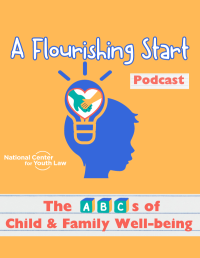The Federal Title X Family Planning Program: Privacy And Access Rules For Adolescents
by Rebecca Gudeman and Sara Madge
The federal Title X family planning program makes family planning and related health services available for free or at low cost to eligible individuals, including adolescents, in every state. Indeed, one of Congress’s specific goals in creating the Title X program was to address the reproductive health needs of adolescents and “prevent unwanted pregnancies among sexually active adolescents.”2
The statutes and regulations implementing the Title X program further this goal by prescribing consent and confidentiality rules designed to reduce barriers to health care and to protect the privacy of adolescent service recipients. In fact, Title X regulations provide adolescents with greater access to confidential family planning than the laws of some states. The fact that access and confidentiality rules under Title X are sometimes different than a given state’s rules, however, can cause confusion. In order to best support youth’ access to needed health services, it is important that youth and the professionals who work with them understand the services available through the Title X program as well as the Title X access and confidentiality rules. They should also understand what happens when state law appears to conflict with these rules.
I. The Title X Family Planning Program
Congress established Title X of the federal Public Health Service Act in 1970 to give all individuals the ability to access quality family planning and related preventive health services. A key priority of Title X is to make comprehensive family planning and other health services available to low-income, hard-to-reach, and vulnerable populations.3 One way the Title X program attempts to meet this goal is by making services available in many locales. In 2008, Title X services were available in 75% of all US counties via more than 4,500 community-based clinics, hospitals, faith-based organizations, university health centers, private nonprofits, government health departments, and other agencies.4 A related priority of the Title X program is to expand adolescent access to appropriate and effective family planning and related preventive health care services. 5
Title X-funded programs deliver a range of health care services, including contraceptive services and information; basic preventive health care such as breast and cervical cancer screening and prevention services; sexually transmitted disease (STD) and HIV testing and referral; and other related preventive health services, all in accordance with nationally recognized standards of care. The programs also provide prevention education. Title X programs are barred from providing abortions as a method of family planning.6
Federal law and regulations establish rules for the delivery of family planning services provided through Title X. These rules address, among other things, the types of services that must be made available as well as issues of access and privacy.7 Health care providers must comply with Title X laws and regulations when they deliver Title X services.8
II. Regulations Relating to Consent and Confidentiality
A. Consent to Title X Services
Federal law and regulations effectively establish consent rules for services funded through Title X. The regulations require that Title X-funded services be made available to all adolescents, regardless of age.9 Courts have held that this means minors of any age may consent to services for themselves when those services are funded in full or in part by Title X, and Title X service provision cannot be conditioned on parental consent or notification.10
B. Confidentiality of Title X Service Information
Title X regulations require that Title X-funded providers keep confidential “all information as to personal facts and circumstances [about patients] obtained by the project staff.”11 The regulations prohibit providers from releasing a patient’s individual information unless the provider has written authorization for the release, the release is necessary to provide services to the patient, or state or federal law requires the release. The regulations also require that providers implement “appropriate safeguards for confidentiality.”12
C. Authorization for Release
Title X regulations allow an agency to release protected information if it obtains a signed authorization. According to the regulations, the “individual” must sign an authorization to release information.13 This means that the patient, even if he or she is a minor, must sign any authorization to release Title X-related medical information. No one else has the authority to sign.
D. Releases Required by Law
Title X regulations allow providers to comply with most state or federal laws that require the release of certain information.14 An important example of this kind of requirement is found in mandatory child abuse reporting law.
Every state has laws that require certain individuals to report child abuse under certain circumstances.15 In many states, medical professionals are among those required to report child abuse or neglect. Typically, even a reasonable suspicion of abuse is enough to trigger the requirement to report. When a state’s reporting law requires a child abuse report, Title X regulations allow Title X providers to comply with that law and disclose otherwise protected information to the specified reporting agency. In fact, in recent years, federal appropriations bills funding the Title X program have often explicitly indicated that Title X-funded agencies are not exempt from state child abuse reporting laws.16
States may have other laws that require disclosure of protected health information in certain contexts. For example, many states require health professionals to report certain communicable diseases to the local public health department or health authority. In cases where state law mandates a disclosure such as a communicable disease report, Title X allows providers to comply.
There is, however, an important difference between federal and state laws that affirmatively mandate the disclosure of protected health information and laws that simply allow disclosure. Title X regulations do not allow providers to disclose information pursuant to a federal or state law that merely permits the release of information – in other words, a law that gives providers discretion in deciding whether or not to release information. State laws and the federal Health Insurance Portability and Accountability Act of 1996 include many provisions that permit rather than require providers to make certain disclosures. Title X providers cannot disclose protected information pursuant to discretionary release exceptions in state or federal law.
E. Family Participation
Title X law requires that providers encourage family participation in Title X projects “to the extent practical.”17 However, providers cannot disclose information to parents about Title X services provided to a minor patient without that patient’s written authorization.
III. When Title X Regulations Conflict with State Law
In most cases providers can comply with both Title X law and regulations and state law. But in some states, state law requires parental consent or notification before a minor may obtain family planning services. Health care professionals and adolescents sometimes wonder which rules apply in these situations.
In such cases, courts have consistently held that while providers must follow applicable state and federal law to the extent possible, providers cannot impose conditions on Title X service provision that limit access or eligibility to those services, even if the conditions are required by another law.18 Thus courts have held that Title X providers must allow adolescents to obtain Title X services on their own consent, even if state law explicitly requires parental consent or notification for such services.19
One of the more recent cases on this issue is County of St. Charles v. Missouri Family Health Council. For many years Missouri’s St. Charles County had been using Title X funds to provide family planning services to adolescents. In 1995, however, the county notified the agency through which it received its Title X funding(the “grantor agency”) that it would begin requiring parental consent when adolescents sought birth-control medication or certain other forms of contraception at county Title X clinics. The grantor agency removed the county’s Title X funding because the parental consent policy violated Title X. The county sued, arguing that it was required to adopt the parental consent policy because Missouri state law requires it. The district court dismissed the county’s lawsuit, which was then appealed to the Eighth Circuit. In its decision, the Eighth Circuit said: “The [Title X] statute states that family participation [in adolescent family planning services] should be encouraged only ‘to the extent practical,’ and the legislative history indicates that Congress did not desire mandatory parental notification or parental consent for a minor to receive Title X services.”20 The court noted that “[a]ll the circuits which have considered the validity of parental consent requirements for adolescents to receive Title X federal services have found them prohibited by [the Title X] statute, regardless of whether they are based on state law.”21 The Eighth Circuit then affirmed the district court judgment.
IV. Conclusion
The Title X program makes free or low-cost family planning services available to adolescents in every state. Federal Title X law allows adolescents to obtain these services on their own consent and protects the confidentiality of their personal information. When state law conflicts with Title X regulations, confusion among providers and adolescent patients may result. Understanding what the Title X regulations provide and how the program should work in states with conflicting state laws will help ensure that adolescents have access to necessary family planning services and prevention education.
A specialist in adolescent health law, Rebecca Gudeman is a Senior Attorney at NCYL who directs the Center’s Teen Health Law Initiative. Sara Madge is a deferred associate at NCYL from Ropes & Gray LLP, working on adolescent health issues.
1This article is adapted from R. Gudeman, Minor Consent, Confidentiality and Reporting Child Sexual Abuse: A Guide for Title X Family Planning Providers in California (Center for Health Training: Oakland, 2nd ed. 2011), available at http://www.teenhealthlaw.org.
2Planned Parenthood v. Heckler, 712 F.2d 650, 652 (D.C. Cir. 1983) (citing S. Rep. No. 822, 95th Cong. 2d Sess. 24 (1978)).
3U.S. Department of Health and Human Services, Office of Population Affairs, “2011 Program Priorities” – Priorities 1 and 5. www.hhs.gov/opa/familyplanning/policyplanningeval/programpriorities/index.html (last visited April 11, 2011).
4U.S. Department of Health and Human Services, Office of Population Affairs, “Family Planning.” www.hhs.gov/opa/familyplanning/index.html (last visited April 6, 2011).
5U.S. Department of Health and Human Services, Office of Population Affairs, “2011 Program Priorities” -Priority 2 (“Expanding access to a broad range of acceptable and effective family planning methods and related preventive health services that include natural family planning methods, infertility services, and services for adolescents, including adolescent abstinence counseling. The broad range of services does not include abortion as a method of family planning”). www.hhs.gov/opa/familyplanning/policyplanningeval/programpriorities/index.html (last visited April 11, 2011).
6See 42 C.F.R. § 59.5; id.
7See 42 C.F.R. § 59.1 et seq.
842 U.S.C. § 300; 42 C.F.R. § 59.1.
9See 42 U.S.C. § 300(a); 42 C.F.R. § 59.5(a)(4).
10County of St. Charles v. Missouri Family Health Council, 107 F.3d 682 (8th Cir. 1997), reh. denied 1997 U.S. App. LEXIS 6564, cert. denied, 522 U.S. 859 (1997); see Does 1-4 v. Utah Dept. of Health, 776 F.2d 253 (10th Cir. 1985); Planned Parenthood Assoc. of Utah v. Matheson, 582 F. Supp. 1001, 1006 (D. Utah 1983); Doe v. Pickett, 480 F. Supp. 1218, 1220-1221 (D.W. Va. 1979).
1142 C.F.R. § 59.11(“All information as to personal facts and circumstances obtained by the project staff about individuals receiving services must be held confidential and must not be disclosed without the individual’s documented consent, except as may be necessary to provide services to the patient or as required by law, with appropriate safeguards for confidentiality. Otherwise, information may be disclosed only in summary, statistical, or other form which does not identify particular individuals.”).
12Id.
1342 C.F.R. § 59.11.
14See 42 C.F.R. § 59.11 (allowing providers of Title X-funded services to disclose information “as required by law”).
15For a summary of state laws that require child abuse reporting, see Child Welfare Information Gateway, U.S. Department of Health and Human Services Administration for Children and Families, Mandatory Reporters of Child Abuse and Neglect: Summary of State Laws (2010), available at http://www.childwelfare.gov/systemwide/laws_policies/statutes/manda.pdf.
16See, e.g., Consolidated Appropriations Act, 2010, Pub. L. No. 111-117, 123 Stat. 3034, 3256-3257 (2009) (“Notwithstanding any other provision of law, no provider of services under title X of the Public Health Service Act shall be exempt from any State law requiring notification or the reporting of child abuse, child molestation, sexual abuse, rape, or incest.”).
1742 U.S.C. § 300(a) (“To the extent practical, entities which receive grants or contracts under this subsection shall encourage family participation in projects assisted under this subsection.”).
18See Planned Parenthood Federation v. Heckler, 712 F. 2d 650, 663-664 (D.C. Cir. 1983) (“[U]nder the Supremacy Clause of the Constitution states are not permitted to establish eligibility standards for federal assistance programs that conflict with the existing federal statutory or regulatory scheme.”); Planned Parenthood Assoc. of Utah v. Matheson, 582 F. Supp. 1001, 1006 (D. Utah 1983); see also County of St. Charles v. Missouri Family Health Council, 107 F.3d 682 (8th Cir. 1997); Does 1-4 v. Utah Dept. of Health, 776 F.2d 253 (10th Cir. 1985); Doe v. Pickett, 480 F. Supp. 1218, 1220-1221 (D.W.Va. 1979).
19County of St. Charles v. Missouri Family Health Council, 107 F.3d 682 (8th Cir. 1997), reh. denied 1997 U.S. App. LEXIS 6564, cert. denied 522 U.S. 859 (1997); see Does 1-4 v. Utah Dept. of Health, 776 F.2d 253 (10th Cir. 1985); Planned Parenthood Assoc. of Utah v. Matheson, 582 F. Supp. 1001, 1006 (D. Utah 1983); Doe v. Pickett, 480 F. Supp. 1218, 1220-1221 (D.W. Va. 1979).
20County of St. Charles v. Missouri Family Health Council, 107 F.3d 682, 684 (8th Cir. 1997(citing Planned Parenthood Fed. of Am. V. Heckler, 712 F.2d 650, 656-61 (D.C. Cir. 1983)).
21County of St. Charles, 107 F.3d at 685.





